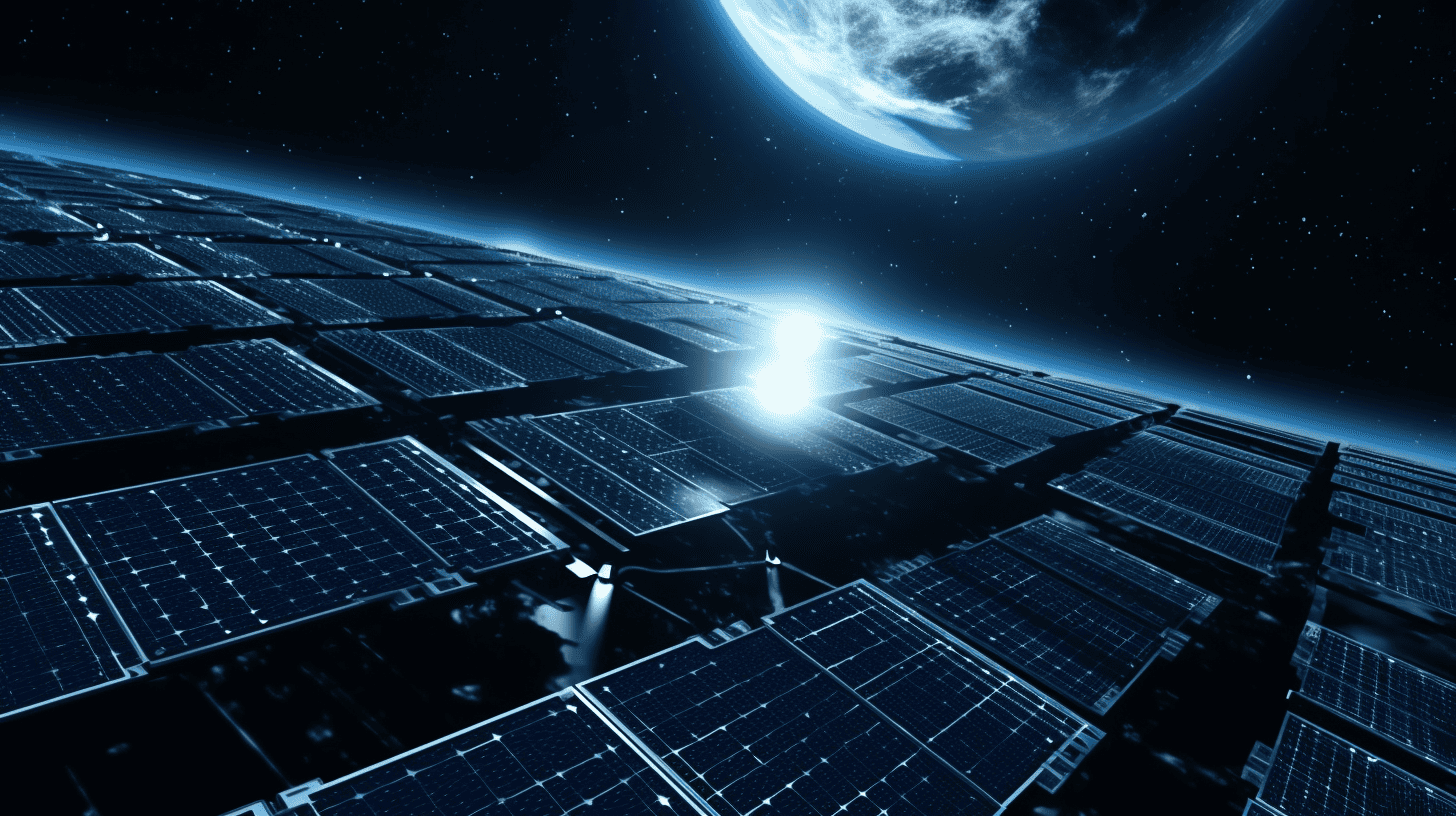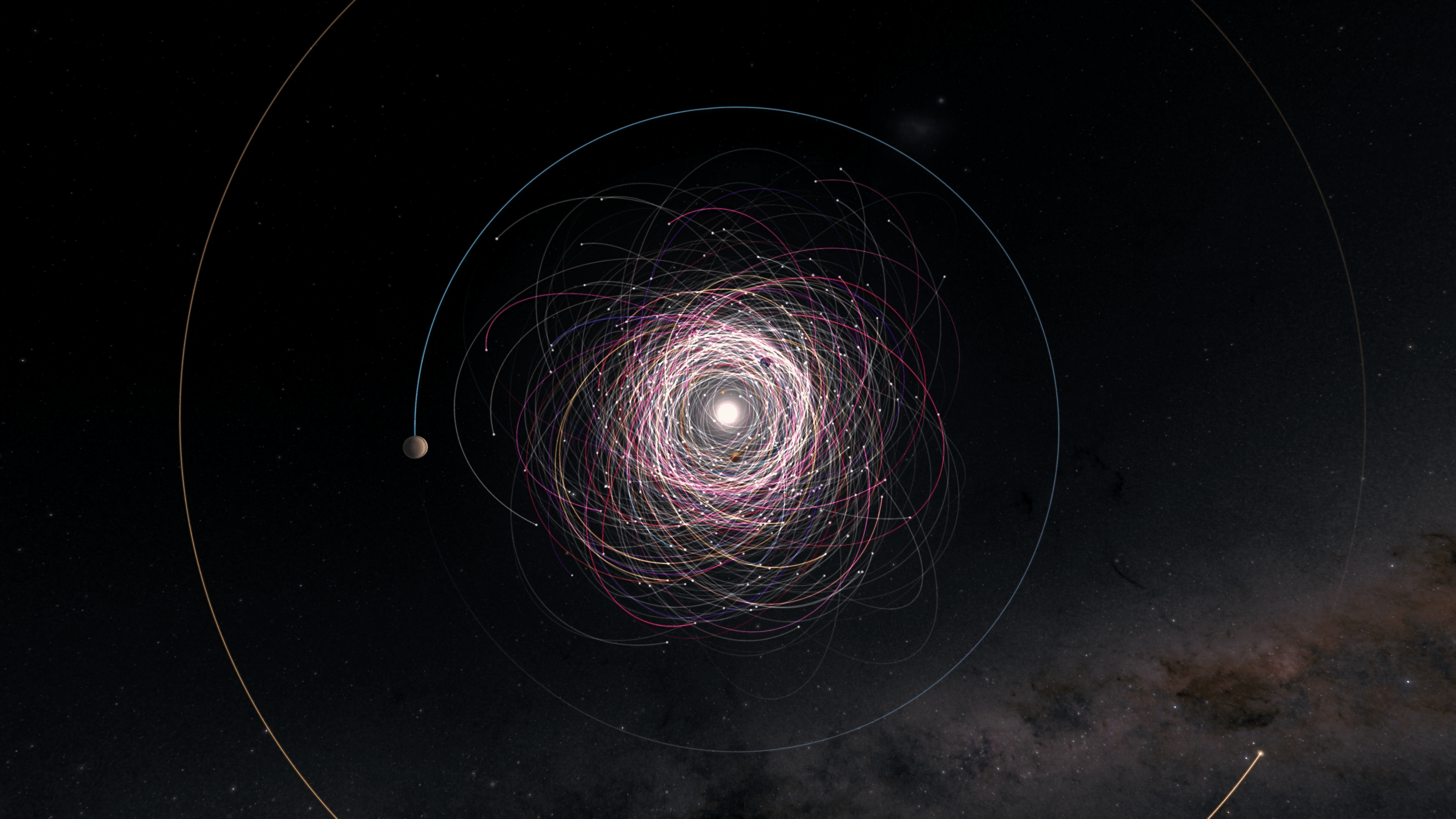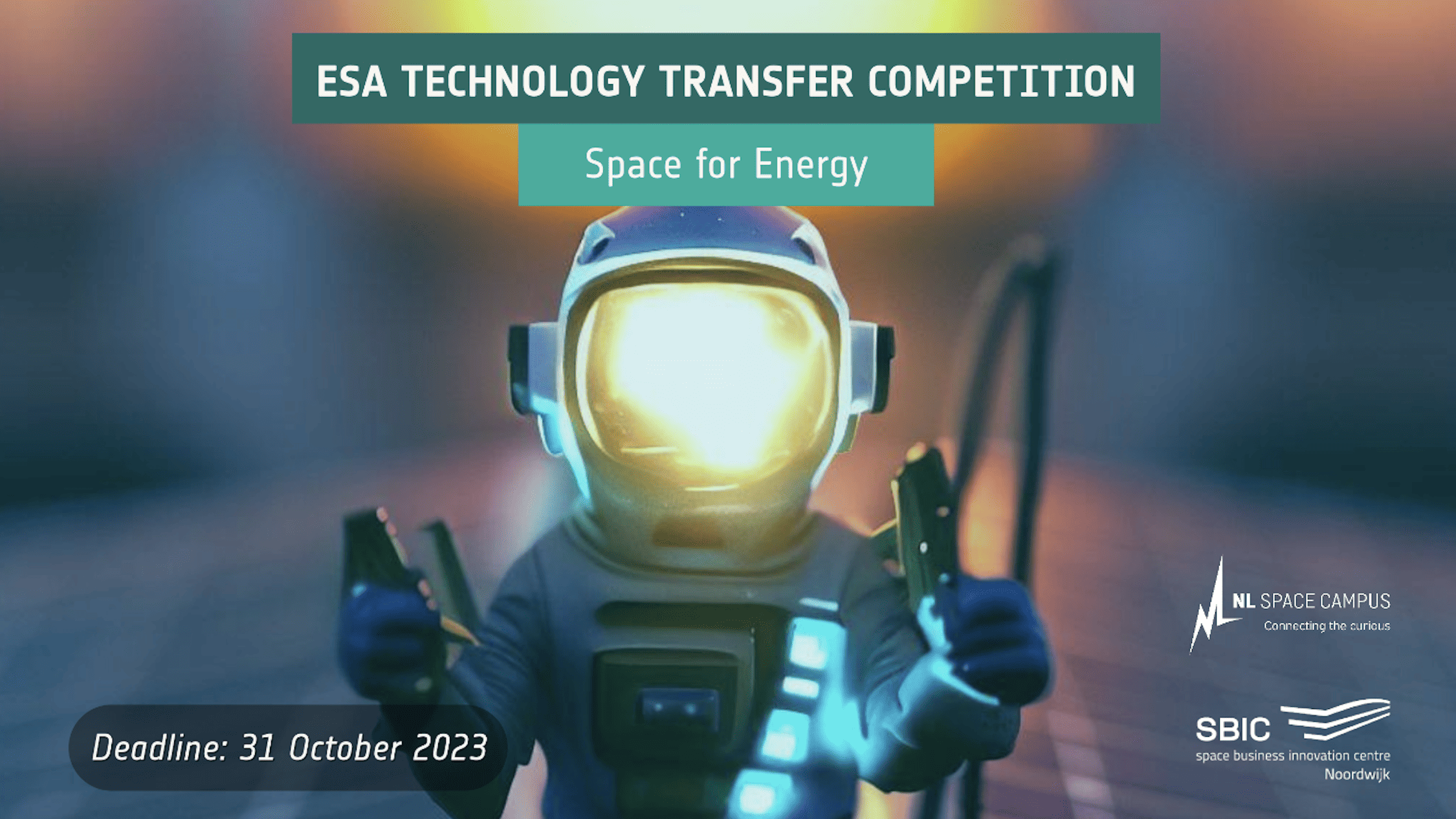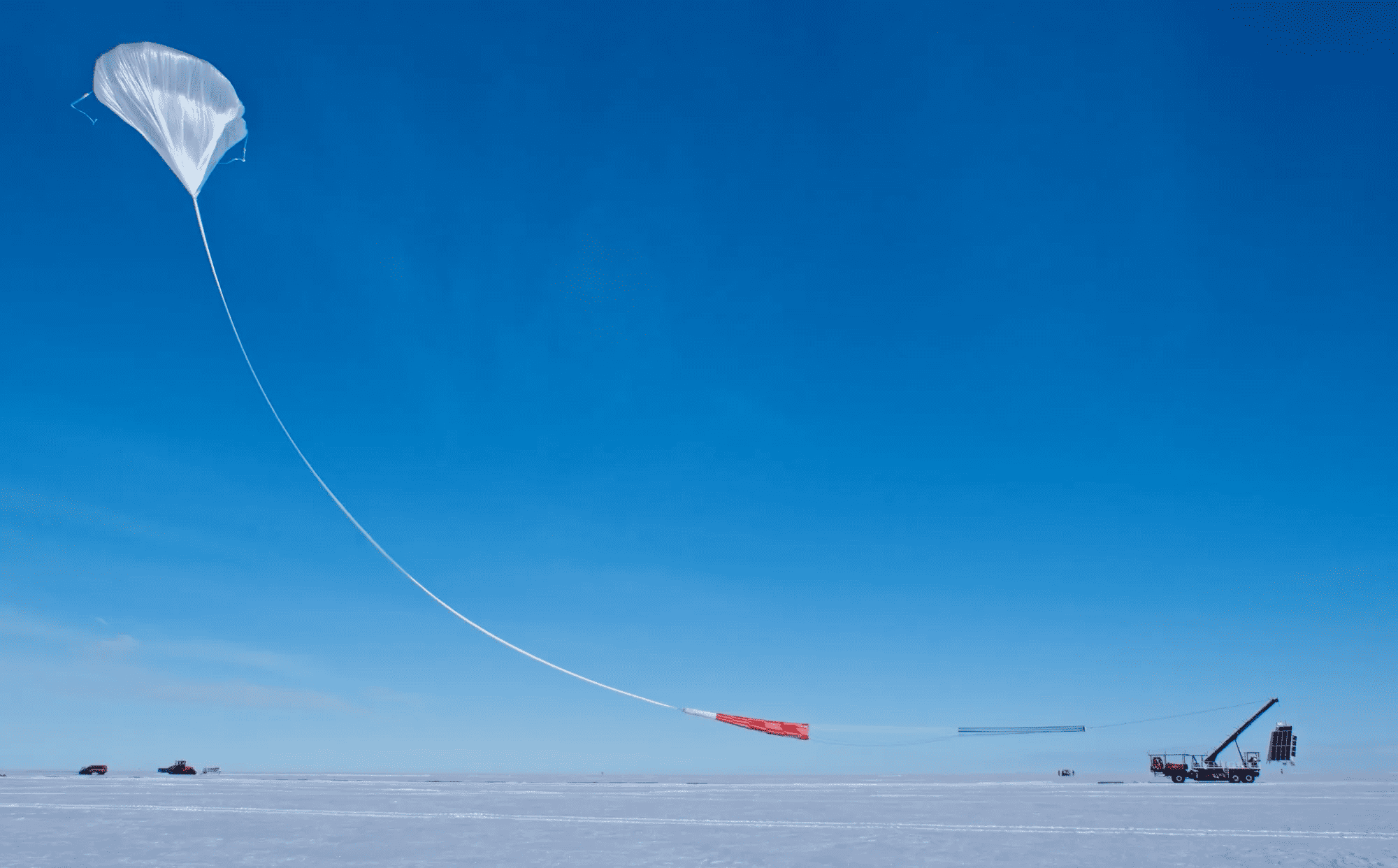
At this point in time, renewable energy sources are struggling to keep up with the rapidly increasing global demand for electricity. How are we going to meet our growing energy demand? Solar energy from space could prove decisive in addressing this challenge. Work is in full swing at the European Space Agency (ESA) and TU Delft to make space-based solar power a reality. “The technology has the potential to significantly mitigate the climate crisis. Hence, we aim to develop it preferably sooner rather than later”, says Sanjay Vijendran from ESA.
- ESA and TU Delft want to make space-based solar power a reality.
- The technology might make a significant impact in tackling the climate crisis.
As the world’s population continues to grow, so does the demand for energy. The undeniable impact on our planet is becoming increasingly apparent. The question arises whether we can produce enough green energy to supply ten billion people by 2050 and continue to satisfy increasing demand beyond that.
SOLARIS
ESA is actively tackling this challenge, with SOLARIS representing an ambitious project that delves into the possibilities of a groundbreaking method for energy generation: harnessing solar energy in space. The system consists of several space solar power plants that continuously collect sunlight and convert it into electricity. This is then beamed via microwaves to ground stations, where it is converted back into usable energy.
“This is not just a nice-to-have technology,” insists Sanjay Vijendran, lead of SOLARIS at ESA. “After talking to many people in the energy sector, we have found that the challenges are extremely great in mitigating the climate crisis with only the currently available tools. Each technology has its own limitations, such as problems with nuclear waste or reliability. Exploring and using all possible means seems wise to enable a smoother and faster energy transition. Solar power from space offers us a valuable tool in this respect.”

Advantages
Space-based solar energy has numerous advantages. Unlike oil, gas, ethanol, and coal power plants, it obviously does not emit greenhouse gases. Moreover, because there are no clouds, atmosphere, and night in space, solar panels on satellites could capture and transmit significantly more energy than solar panels on Earth, and do so very reliably without the intermittency that plagues terrestrial solar and wind technologies. Receivers of the energy from space would take up much less space than equivalent ground solar farms of wind parks. And perhaps uniquely, energy can be beamed from one country to another across entire regions and different times, without the losses incurred in cables, simply by steering the beam.
Challenges, and more challenges
The fundamental technologies, essentially similar to that of communication satellites, are well known – a concept we have known and used for six decades. The basic components for the required steps are easily accessible, but there is a need to develop the technology further to improve performance and reduce costs.
There are several challenges involved, Vijendran explains. One is the mass production of space hardware. “Millions of components need to be manufactured at low-cost. But there is evidence that this is feasible, given the thousands of satellites launched today.” Moreover, assembly of these parts in space, performed by robots, is crucial to make space projects more affordable compared to manual assembly by astronauts. “So we need to answer the question of whether a fleet of autonomous robots can work together in space like workers on a contruction site on Earth.”
Perhaps the most important focus of SOLARIS is establishing wireless transmission, facilitating the transfer of electricity from space to the ground with minimal loss while ensuring accuracy over long distances and maintaining safety. “We now need to demonstrate this capability at longer distances and higher power levels, using larger antennae to maintain controllability.”
What’s on the agenda
SOLARIS has recently completed technical concept studies on commercial-scale plants and now is preparing to undertake further studies on a sub-scale in-orbit demonstrator mission. In parallel, technology development and scientific research-based activities are being initiated at ESA to further de-risk a future development of Space-based Solar Power and understand its socioeconomic implications. Finally, ESA is also working on better understanding the regulatory aspects of space-based solar power and raising awareness amongst the energy sector and national governments.
A demonstrator
TU Delft is working with ESA and other partners (Sirin Orbital Systems AG and the University of Strathclyde) on studying a demonstrator for solar energy from space. “This project involves small satellites (CubeSats) based on units of ten by ten by ten centimeters,” says Angelo Cervone, associate professor at TU Delft who us involved in the project. “In the next phases, our goal is to have the mission actually implemented, and if everything goes smoothly, we will go to space for demonstration.” A crucial question at this stage is how to implement the mission. “There are two possible approaches: using lasers or radio-frequency antennas. In this project, the emphasis is on the latter, although it remains an open question.”
Stefano Speretta is also involved in the project. The main topic he is focusing on is satellite coordination. “Imagine throwing two stones at a lake, and the wave patterns have to converge properly in order to make a larger wave and not cancel each other” he explains. “This analogy corresponds to our project. Since we will have several satellites transferring power at the same time, the coordination is crucial to ensure that the power reaches the receiver effectively. Therefore, the relative location between two satellites must be known, down to half a centimeter in space, while the satellites are traveling at a speed of seven kilometers per second.” A monumental task.
These are only a subset of the research questions that the project addresses. Technological challenges, safety considerations, funding—numerous elements must align for the mission to happen. Consequently, it’s unsurprising that space missions often require considerable time. The execution is anticipated to occur within the current decade.
The sooner, the better
With the transition from a fossil-fuel-based economy to a sustainable future in full swing, the timely development of solar energy from space is crucial. “We want to act sooner rather than later, accelerate the process and advocate for its implementation,” says Vijendran. “We are working towards a commercially-viable pilot plant in space by 2035.”







